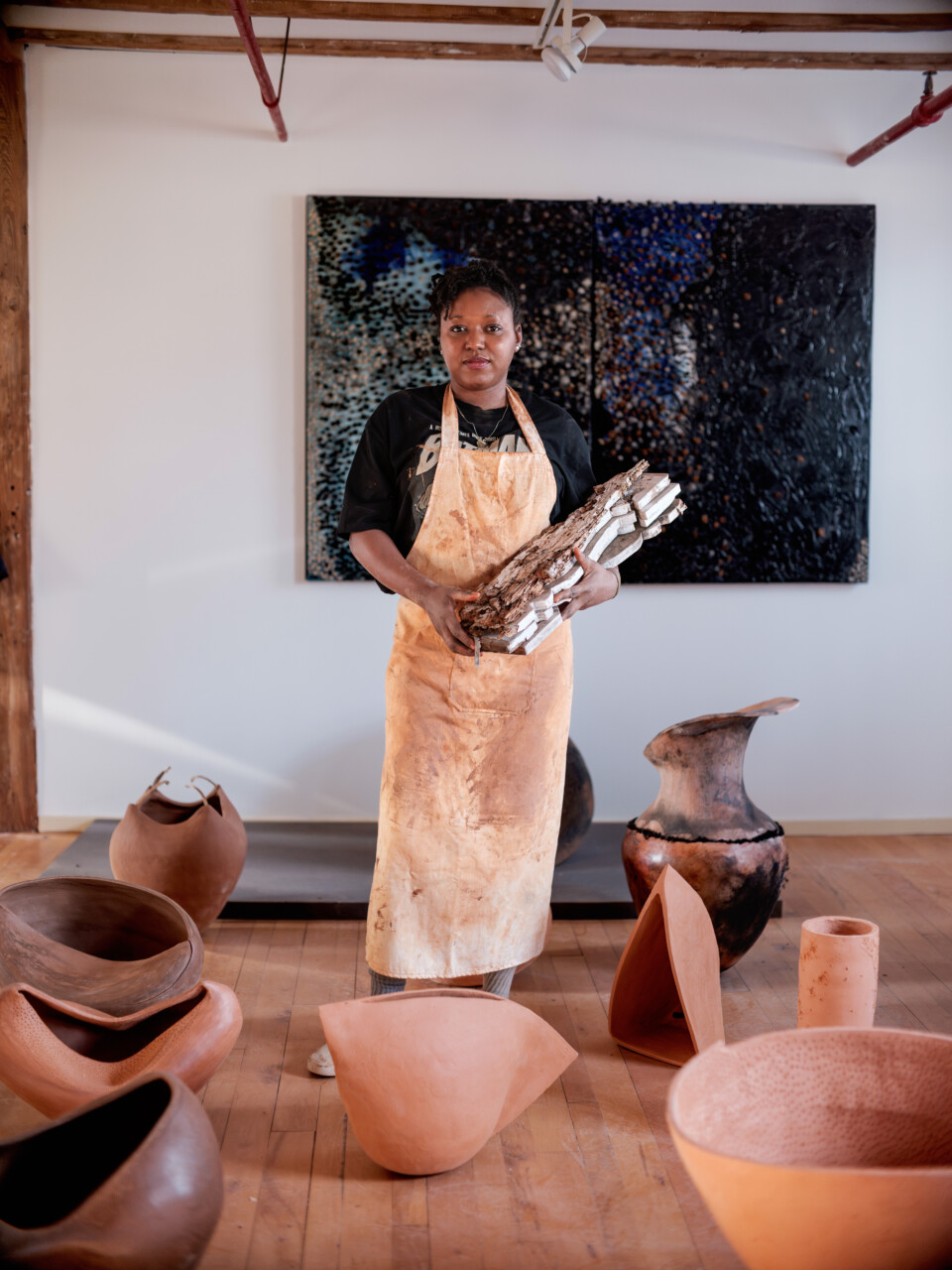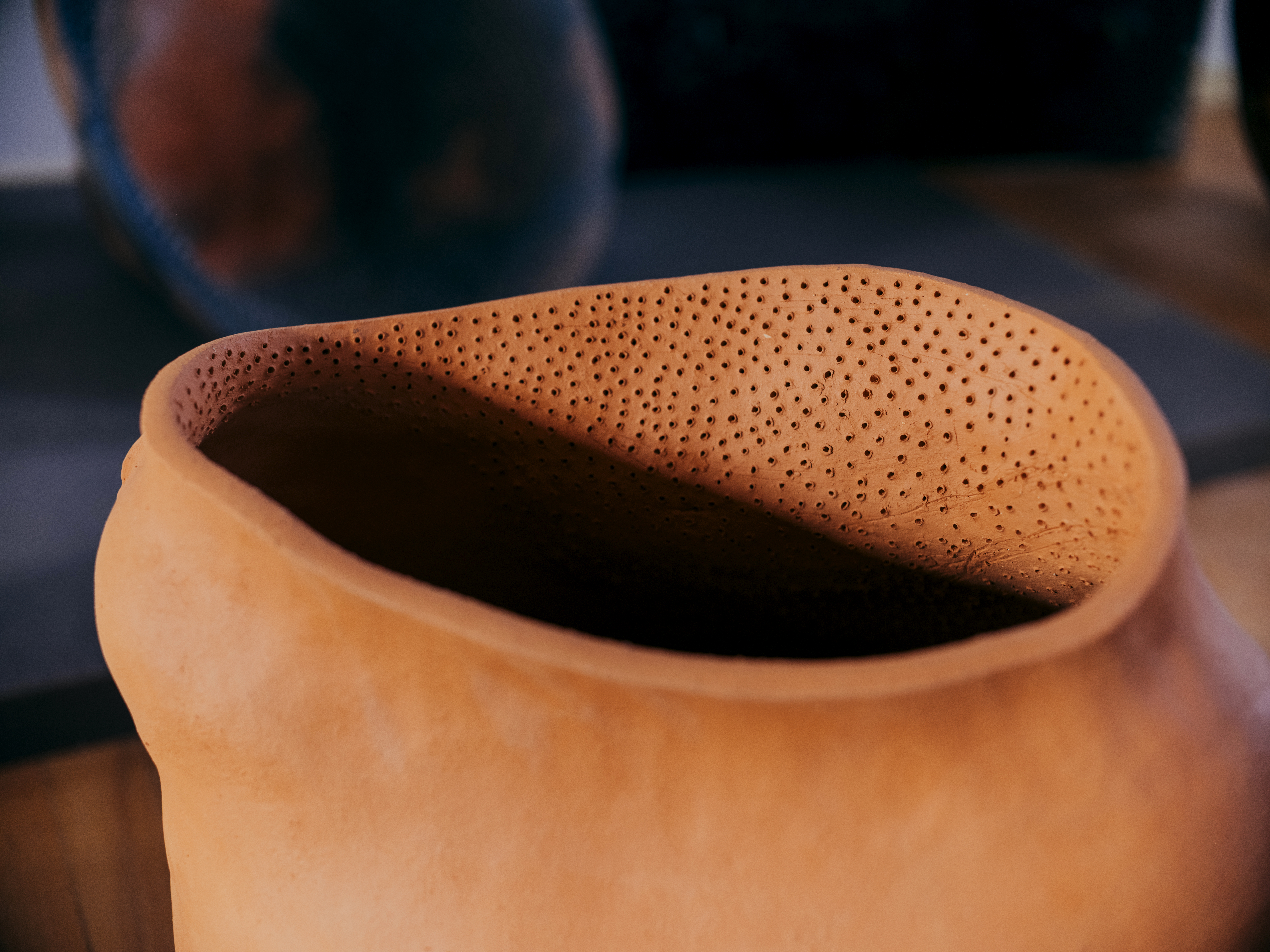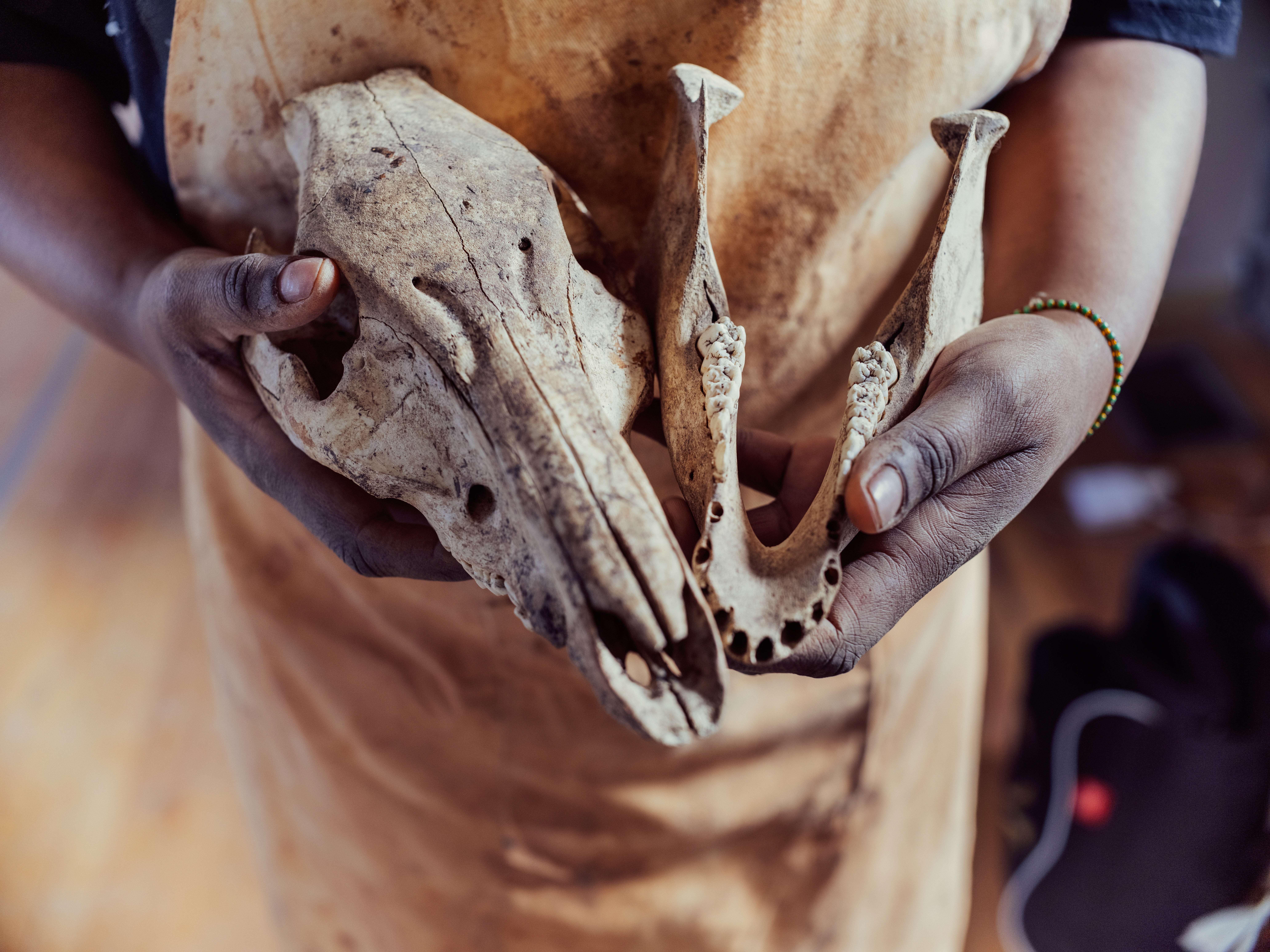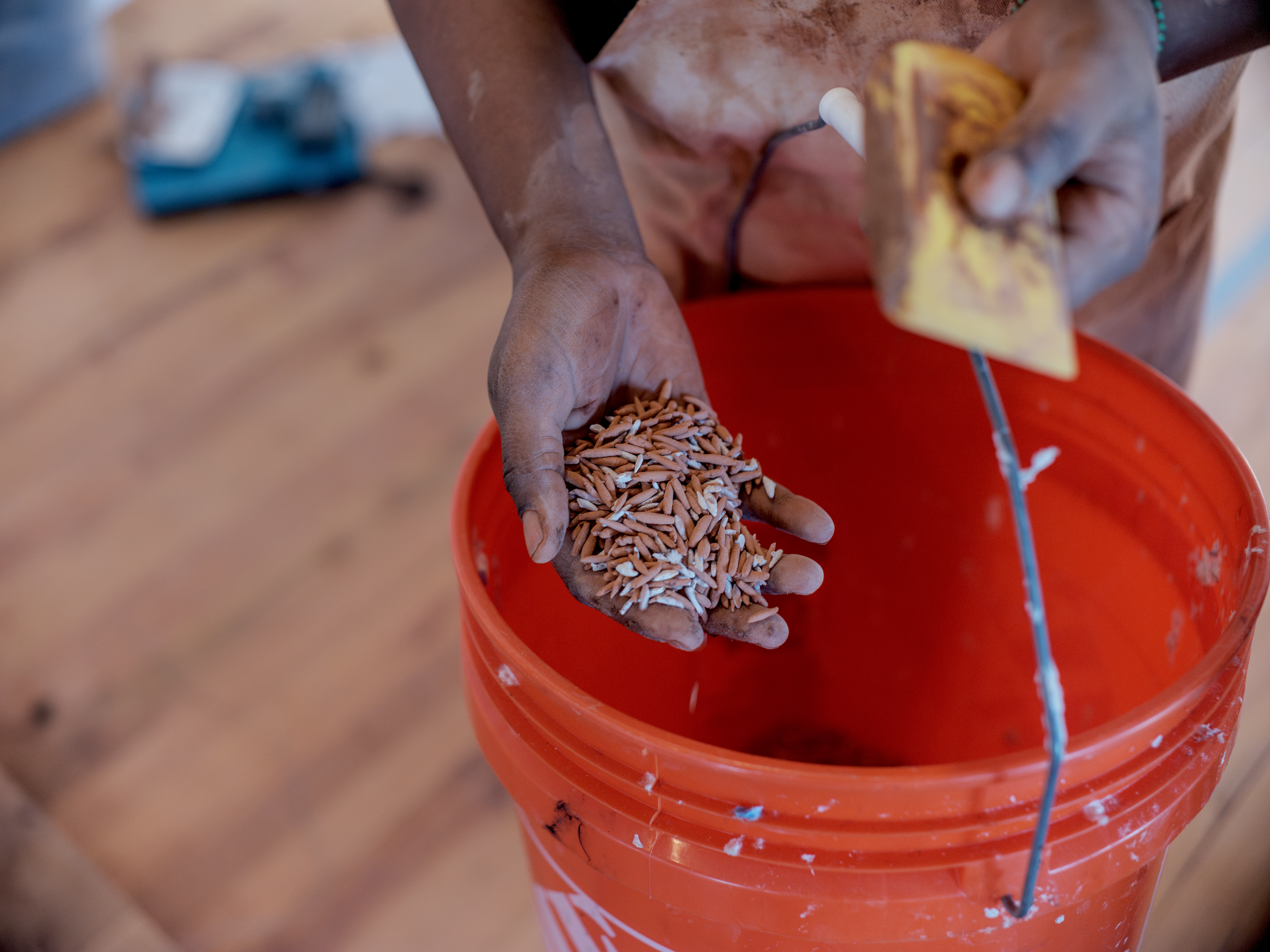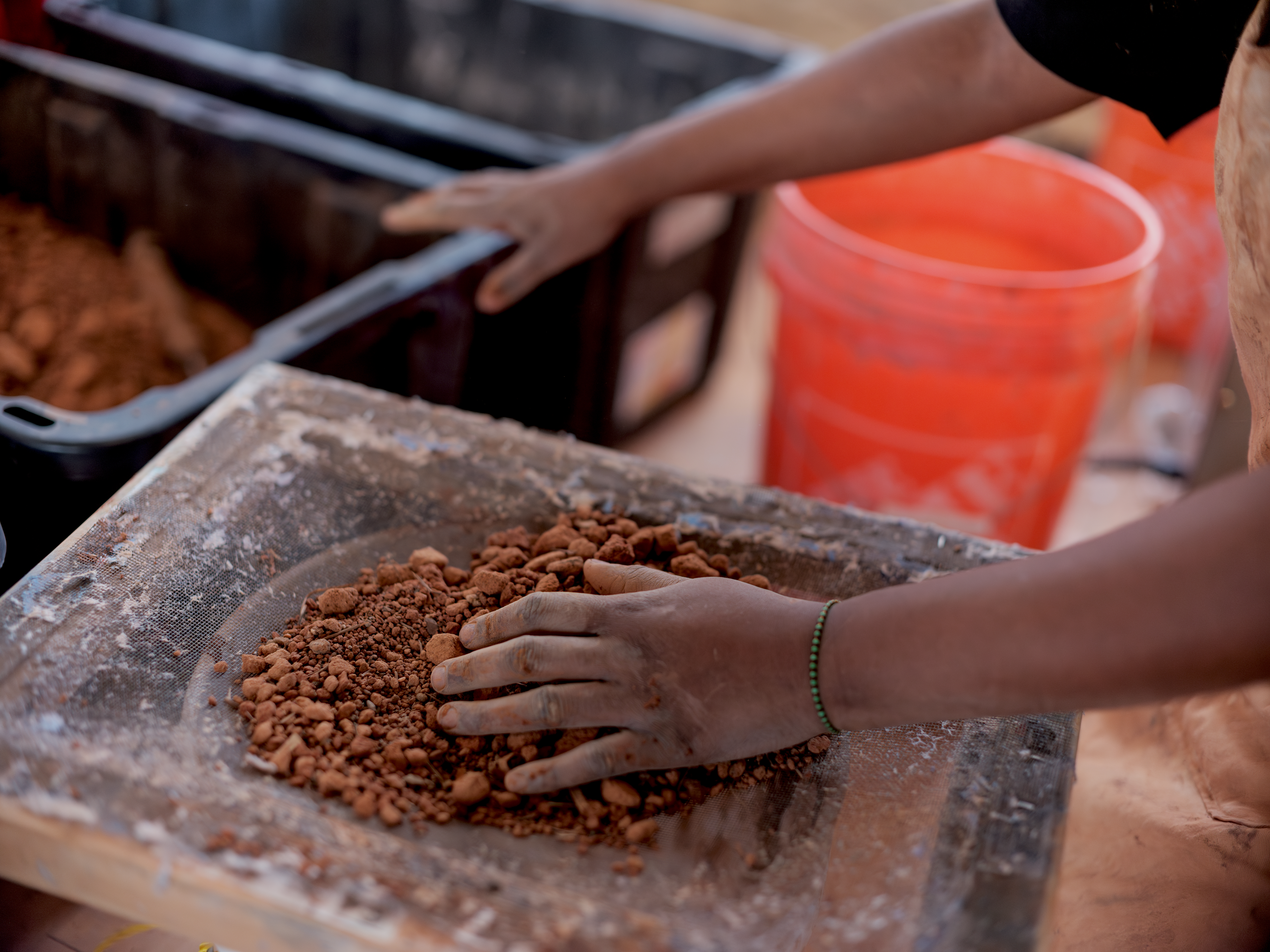There’s fresh snow on the ground, and winter is rearing its head in Philadelphia. Meeting Adebunmi Gbadebo in her North Philadelphia studio is a welcome retreat. Featuring classic design elements of the early twentieth century—exposed wood beams, gray brick walls, and gorgeous hardwood floors—the space is warm and rustic, just like its host. Gbadebo is an experimental multidisciplinary artist primarily working in ceramics and paper, though she’s always open to creating in other mediums.
When we speak, Gbadebo is working on a mishmash of burnt red clay pots already fired in the kiln and a large round of paper embedded with indigo-dyed hair that takes up almost half of her paper studio. Tools and materials are spread across nearly every surface in the room, evidence of the many steps of her process.
Using hundreds of pounds of dirt she’s collected from True Blue Plantation in Fort Motte, South Carolina—the land of her maternal ancestors’ enslavement—Gbadebo crafts clay to create her classic vessels. Reflecting on the irony of the plantation’s name, she remarks, “True who? What is true of that space?” For works on paper, she mixes hand-picked cotton, donated hair, and other natural elements and binds them together in a new form, simulating the Japanese threading technique known as couching, where a strong thread, invisible to the untrained eye, supports a daintier, more decorative one that adorns an embroidery work. Gbadebo’s hands and her family’s essence are imbued into every piece.
Pottery and papermaking are labor intensive, what Gbadebo jokingly calls “quite a workout.” In making the clay pots, she recounts a process that involves different West African coil-building techniques. For her, the work is about “all that this earth holds: my ancestors, their blood, this history, the spaces that they lived in.” In her pieces, Gbadebo allows us to pay a visit to her place of anthropological envisioning.
